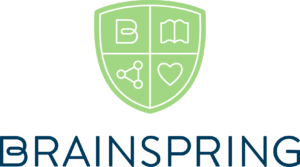Reading and Dyslexia Legislation Unveil the Need for Reading Instruction Changes
Posted by Angelina Spiteri-Bender on 14th Mar 2018
While coaching teachers in Phonics First® (Brainspring’s accredited Orton-Gillingham based program) a couple of weeks ago at a local Michigan school, I could not help but be drawn to the literacy coach. She was, none the less, busy…Busy coordinating with teachers and staff in preparation for the third-grade reading law the State of Michigan is adopting for the 2019-2020 school year. It got me thinking not only about this sudden change for my state but also for other states. If we as a country are putting strong systems in place to facilitate literacy from a young age, and/or are identifying struggling readers early on, does this mean we are discovering that all children can benefit from structured, explicit, multisensory phonics instruction?
Third-Grade Reading Laws Across the Country
Several states across the country already have a third-grade reading law, and no, my beautiful State of Michigan was not the trailblazer. The intention of a third-grade reading law is to avoid any sort of retention, thus giving students the proper literacy “nutrition” they need well before the third grade. States that currently have laws in place decide whether it is a requirement for students to be retained in the third grade, or if students are allowed to advance to fourth grade with certain requirements and interventions.
Click below to see which states do and do not have a third-grade reading law:
Third Grade Reading Legislation
Reading Instruction for All Learners
When I am not instructing teachers at Brainspring Educator Academy, I am overseeing a couple of our local learning centers where we provide one on one instruction using our accredited Orton-Gillingham based program. We see students every day that are struggling with their reading. Many have a learning disability or a diagnosis of dyslexia. Some have no diagnosis at all, yet need the additional support. Regardless, these students are struggling in learning how to read. They need to be taught how to read. When gaps in learning are identified, we plug away one step at a time. We fill in these gaps, and our students begin to understand the sounds and rules that comprise our complex English language. Once a strong foundation is built, out comes the confidence and the motivation to plug along and move forward! Likewise, our students nationwide … need to be taught how to read.
Students who struggle with reading want to do well. They just need the proper tools to succeed. We could say the same thing for educators and parents. We want to utilize the proper tools to allow all of our students to succeed. Many teachers who take our Phonics First® training are often surprised that they never formally learned “how” to teach a child to read in their teacher education programs. Many parents refer to us as “the missing piece” they were searching for all along. Teachers who teach their students using the Orton-Gillingham methodology are not just servicing their struggling readers. They are teaching all their students how to be strong, independent, and fluent readers, giving them the tools necessary to decode any word they come across and spell like a champion!
Dyslexia Laws
According to the National Institute of Health, dyslexia affects 5-10% of the population and is the most common cause of reading difficulties in elementary school children. Many states around the country have dyslexia laws that significantly benefit these students. If a state has a dyslexia law, students are screened in grades K-3, and teachers are provided training and professional development on how to teach children with dyslexia.
An institution such as Brainspring Educator Academy communicates with many states across the country, predominantly states that have dyslexia laws, and then facilitates instruction with administration and teachers in our accredited Orton-Gillingham based program, Phonics First®. After completion of the course, teachers are equipped with the tools needed to teach students how to read, whether they are dyslexic or not, struggling or excelling.
Dyslexia laws in the USA can be found here (International Dyslexia Association):
Note: dyslexia laws vary from state to state
Advocate …
If your state does not yet have a dyslexia law, many students who need to be taught how to read may be falling through the cracks. It is important that we do our best to advocate and take a stand for change. Little charity events can turn heads and communication can light a spark. We did a “fun run” for dyslexia not too long ago, and a state representative stopped by to ask a few questions. It’s the little things that sometimes make the biggest difference.
What We Can Expect to See in Michigan …
For our educators and parents in Michigan who are just learning about our third-grade reading law, I did a mini-interview with the literacy coach I mentioned earlier, to get an idea of the ins and outs of what we should expect in the upcoming months. She shared how her school is revamping their assessing procedures, to not only identify already existing struggling readers but to also ensure students are on the right road to literacy early on.
A mini-breakdown (Michigan schools are currently preparing for the 2019-2020 school year, which is when this law goes into effect):
- Students will receive intervention only if they did not pass an evidence-based test of the schools’ choice from which to base off (for example, NWEA (Northwest Evaluation Association’s Measures of Academic Progress)). The “Danger zone” is below the 40th percentile, and focus will be geared towards the weakest of the three: phonics, fluency, or comprehension
- A reading plan will be created for identified students by a team at your school. This could include a variety of people (general/special ed teacher, interventionist, reading specialist, literacy coach, etc.). Students will receive 30 minutes of additional support in small group intervention during their reading block.
- Progress will be tracked throughout the school year. Students are formally assessed three times/year, and teachers also monitor progress every 4-6 weeks. The purpose of all this assessing is to determine whether to keep the current intervention, change/modify the current intervention, or place out of the at-risk area.
Frequently asked questions (Michigan Department of Education):
About the Author
Angelina Spiteri-Bender, CDP
Angelina is the Learning Center Director at Brainspring Grosse Pointe and Lake Orion and is also an Instructor at Brainspring Educator Academy.
Bring Brainspring Orton-Gillingham multisensory instruction to your classrooms, transforming struggling K-12 readers into skilled learners through our effective, evidenced-based approach.
For more information please visit brainspring.com or call 1-8007323211

